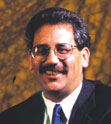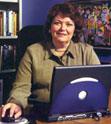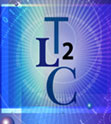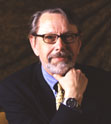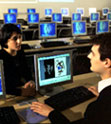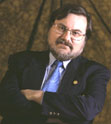 |
||||||||||||||||||||||
|
Leading. Leading. Leading. Leading.
Leading. Leading.
|
||||||||||||||||||||||||||||||||||||
|
Professor Francis’s work on bilingual elementary education has blossomed because of a synergy created among interdependent researchers and between these researchers and the local community. As one of the most ethnically diverse metropolitan centers in the country, Houston is ideal for research on bilingual education. So much so, in fact, that UH was selected, along with the University of California at Santa Cruz, to house a national center for research on this issue. Co-directed by Professor Yolanda Padron in our College
of Education, the Center for Research on Education, Diversity, and
Excellence (CREDE) is a multi-university consortium that helps diverse
student Leaders at UH do not work in isolation, but develop intellectual partnerships that take their work to a higher level. There is no better symbol of this than our Texas Learning and Computation Center (TLC2). Dedicated to the development of technology-based tools for research and instruction, TLC2 serves the many programs on campus that require high-performance computing facilities. Completed this past year, the TLC2 complex, located in Philip Guthrie Hoffman Hall, includes computational research laboratories, a visualization research suite with virtual reality equipment, a conference room with interactive displays, and two interactive distance-learning classrooms. Current projects concern computer modeling of complex
molecules, advanced computer applications development, parallel
computer processing, scalable scientific software libraries, numerical
simulation of blood flow, and air quality modeling and simulation.
Many of these projects are already bearing fruit. In November, a
$3.5 million grant from the Environmental Protection Agency was
awarded to a team Under the guidance of Lennart Johnsson, a Hugh Roy and Lillie Cranz Cullen Distinguished Professor of Computer Science and the director of TLC2, UH became a founding member of the Los Alamos Computer Science Institute (LACSI). Funded by the Accelerated Strategic Computing Initiative, the Department of Energy, and the National Science Foundation, LACSI ensures that the best software and mathematical techniques are used in practice. Students are trained in these new technologies, and new advances are given the necessary attention and resources. This past year, B. Montgomery Pettitt, a Hugh Roy and Lillie Cranz Cullen Distinguished Professor of Chemistry and the director of the Institute for Molecular Design (IMD), which is also part of TLC2, received $1 million from the W. M. Keck Foundation to purchase an 800 MHz nuclear magnetic resonance (NMR) machine, the largest and the first of its kind in Texas. IMD combines high-performance computing with theoretical chemistry to produce computer-aided molecular design and biomedical research, and its scientists have access to most of the largest non-secured supercomputing resources in the nation. The new NMR machine will expedite the study of larger molecular samples at higher resolutions. Through the IMD, UH is one of the founding members
of the Gulf Coast Consortium (GCC), established to promote collaboration
among its member institutions: UH, Baylor College of Medicine, UT-Houston
Health Science Center, UT Medical Branch at Galveston, UT M.D. Anderson
Cancer Center, and Rice University. The GCC is supported in part
by a $3.5 million grant from the Keck Foundation. Over the past
ten years, the GCC has received NIH training grants for graduate
Within the last two years, UH research has given rise to five spin-off companies, which have attracted more than $55 million from venture capitalists. Our partnership with institutions in the Texas Medical Center has enhanced biomedical research efforts for all parties. The oil and gas industry has benefited by research at UH also: Arthur Weglein, the Margaret S. and Robert E. Sheriff Faculty Endowed Chair in Applied Seismology, leads a consortium of major industrial partners concerned with oil and gas exploration, and our Allied Geophysical Laboratory continues its work in seismic data imaging with oil and gas companies, furthering its research with a major grant from the U. S. Department of Energy. Whether their work is enhanced by a synergy among colleagues in biology, or among interdependent researchers working on educational issues, or among virtual partners in our high-tech research center, the outstanding leaders at the University of Houston are those who have increased the power of their ideas with a collaborative spirit. |
|||||||||||||||||||||||||||||||||||
|
|
Next Page | |||||||||||||||||||||||||||||||||||
| Previous Page | ||||||||||||||||||||||||||||||||||||

